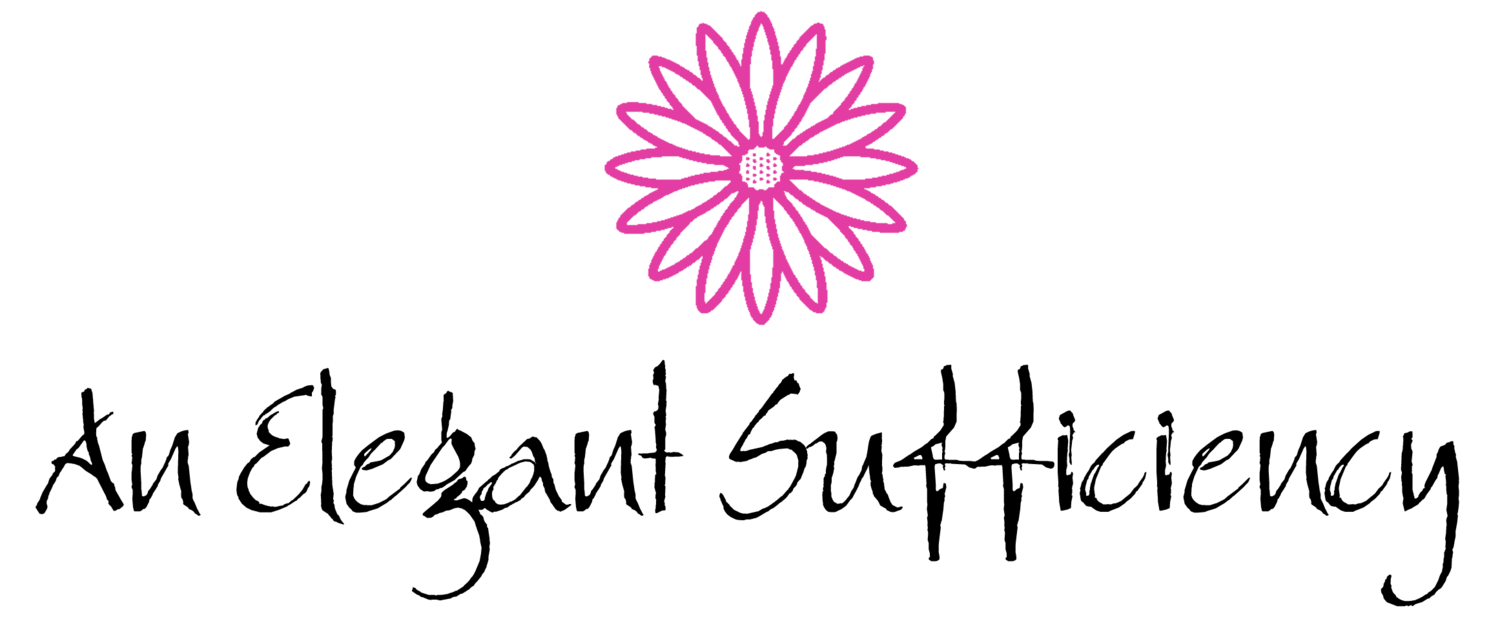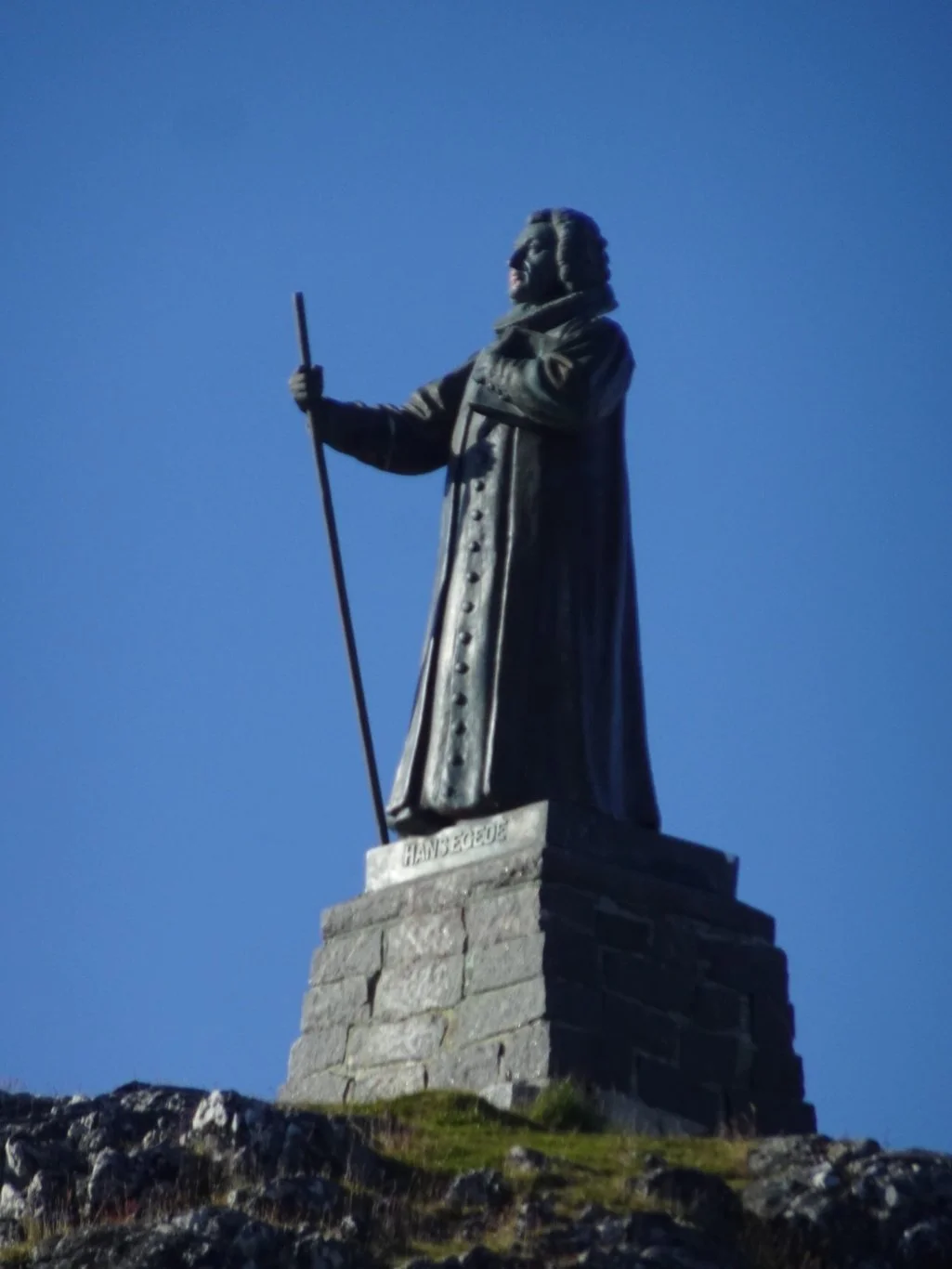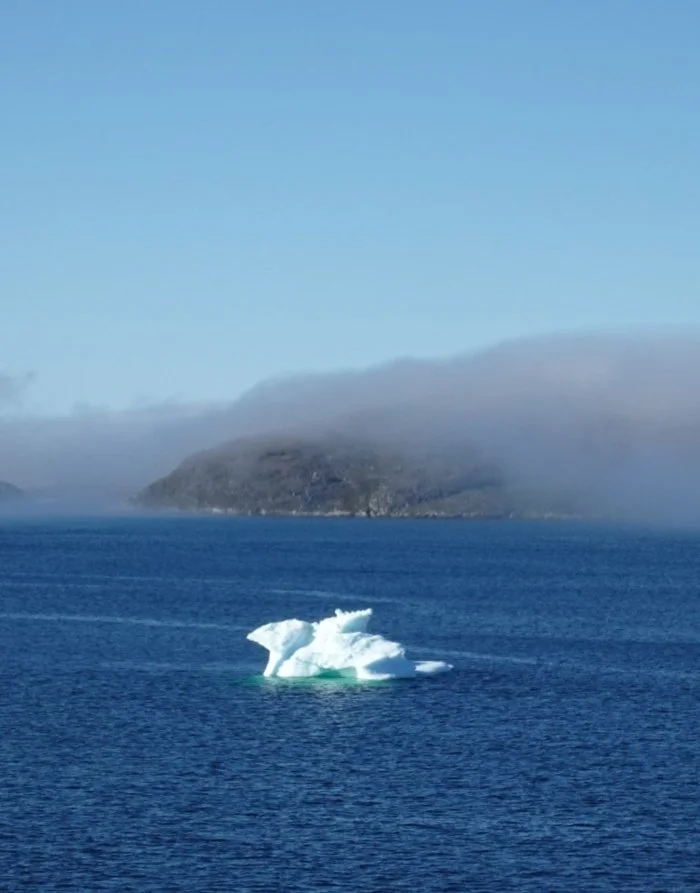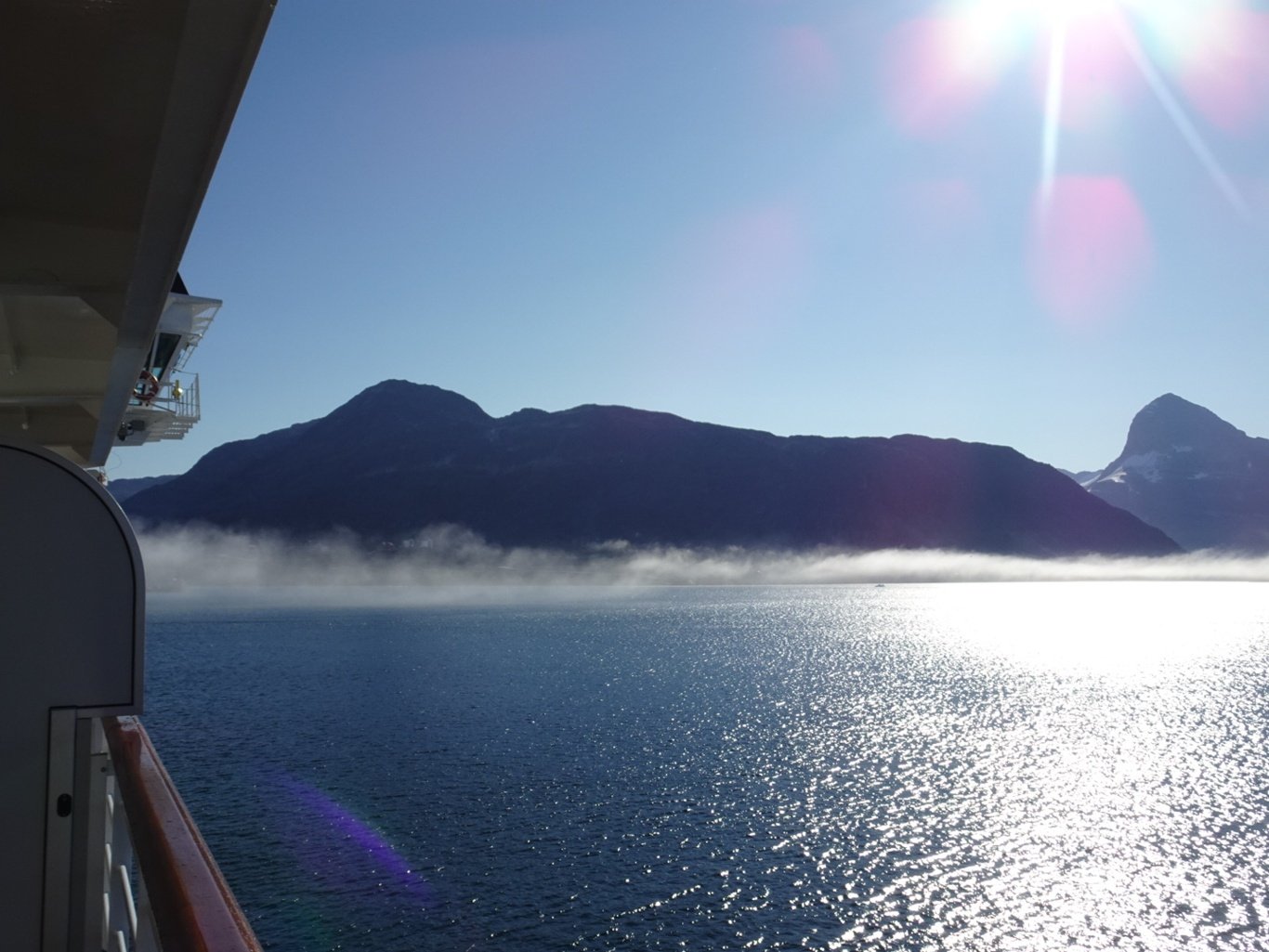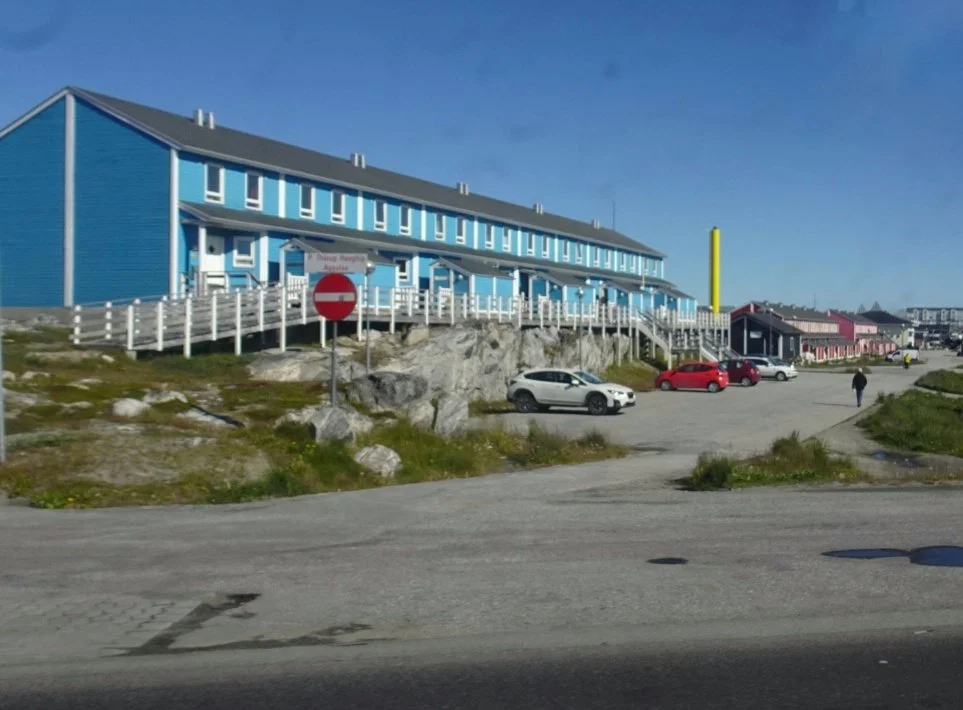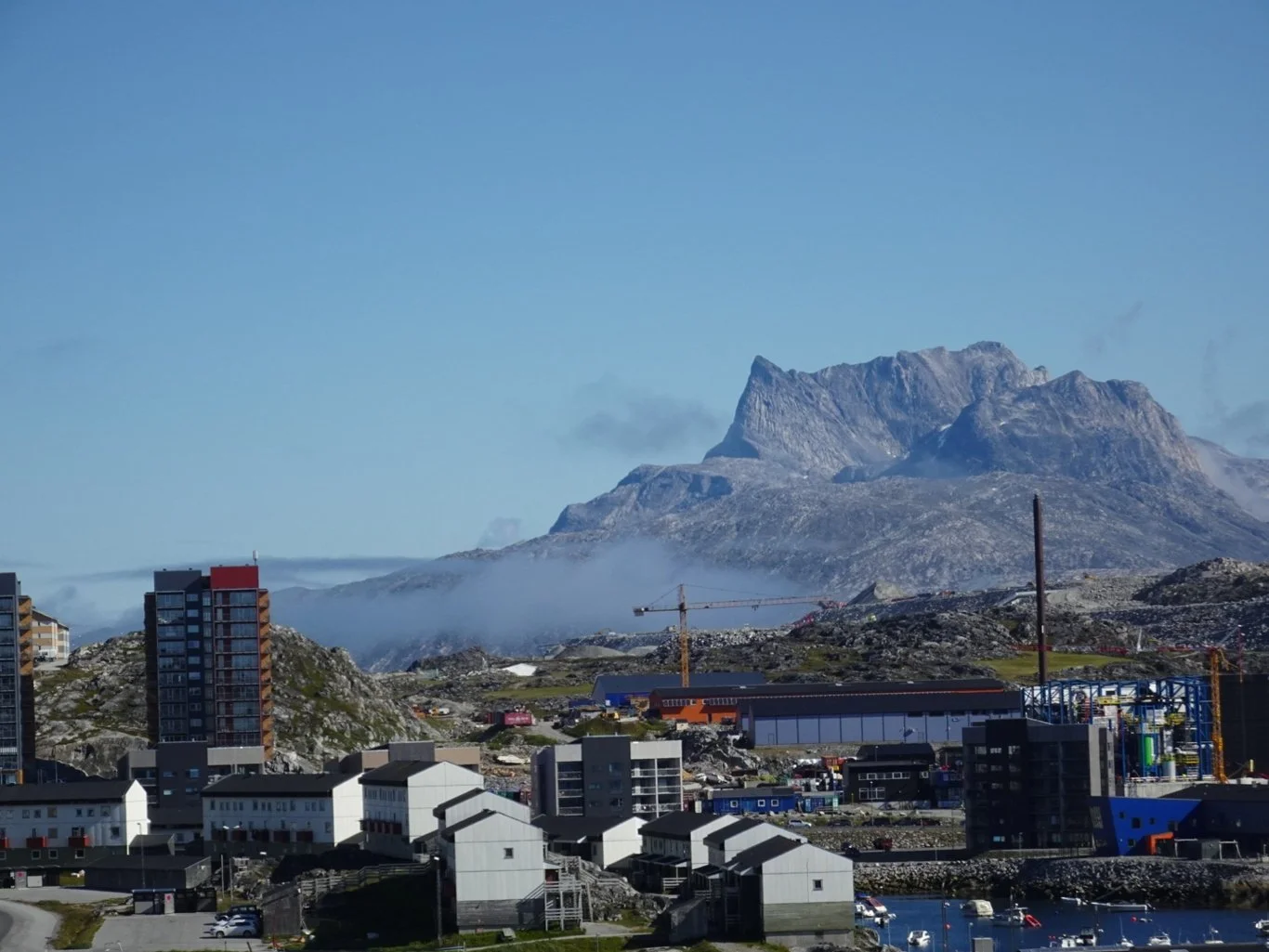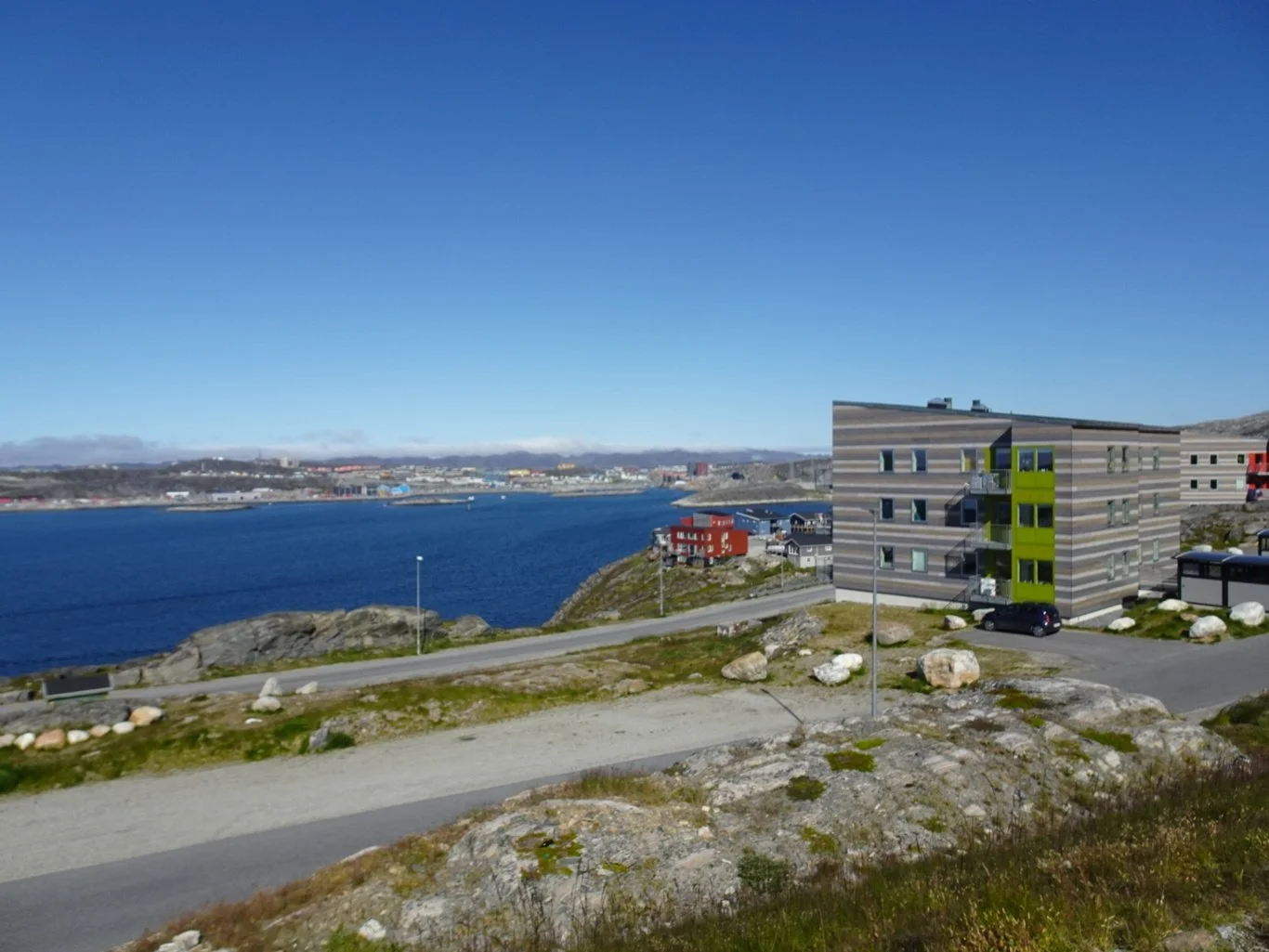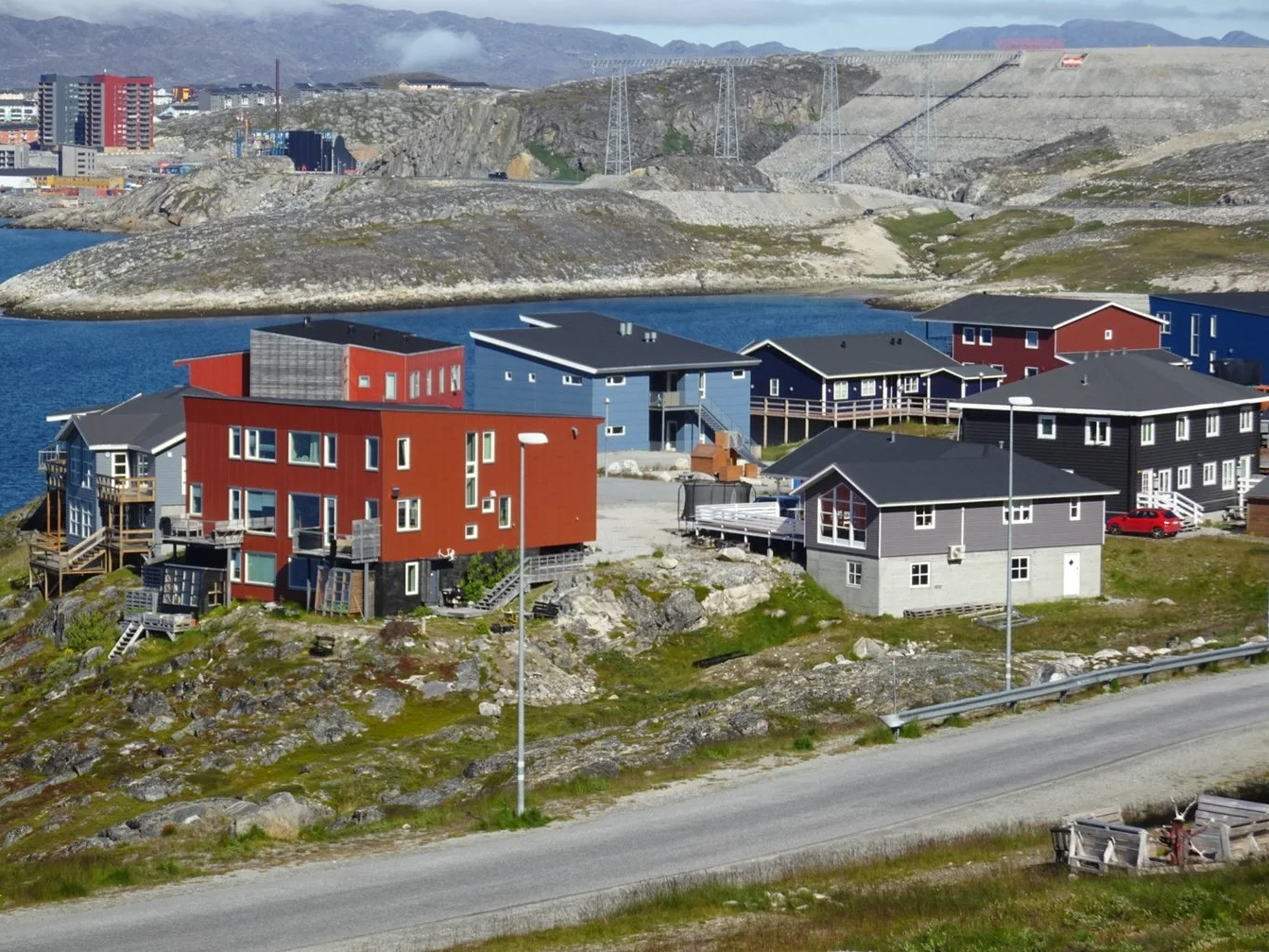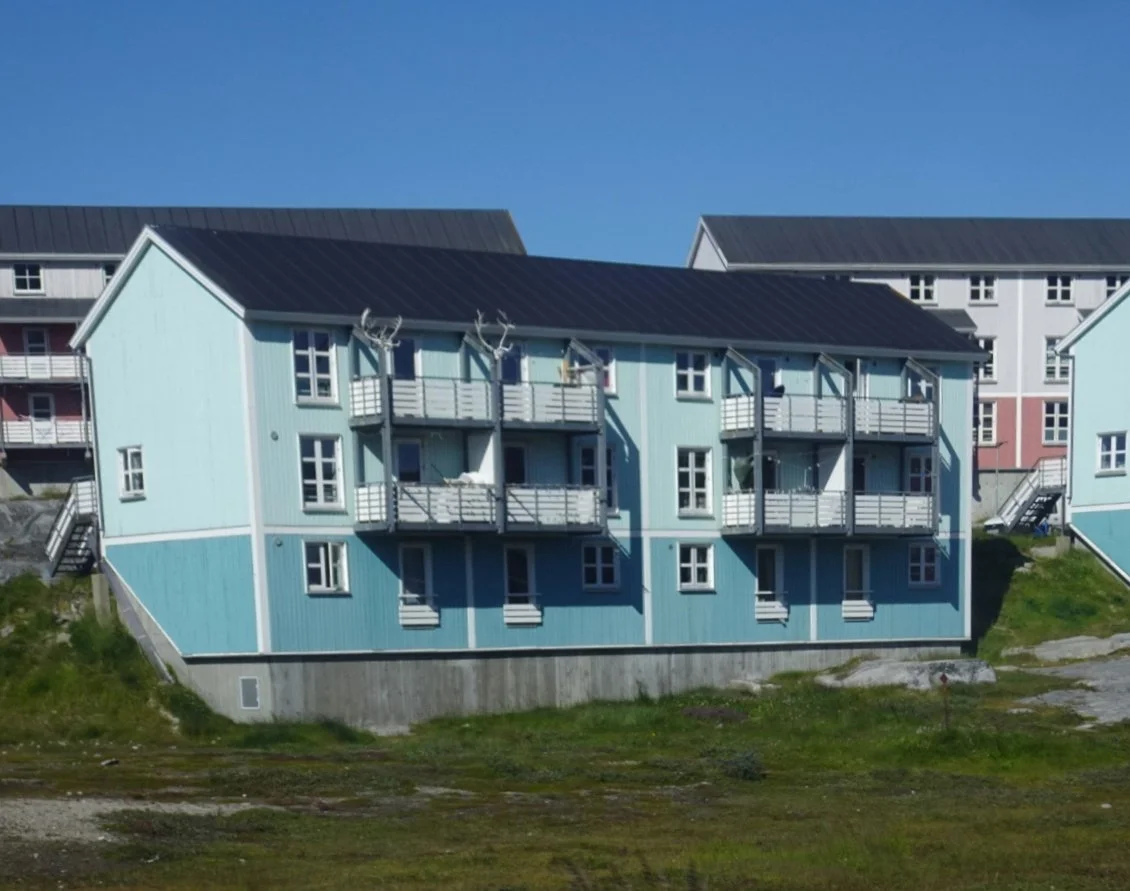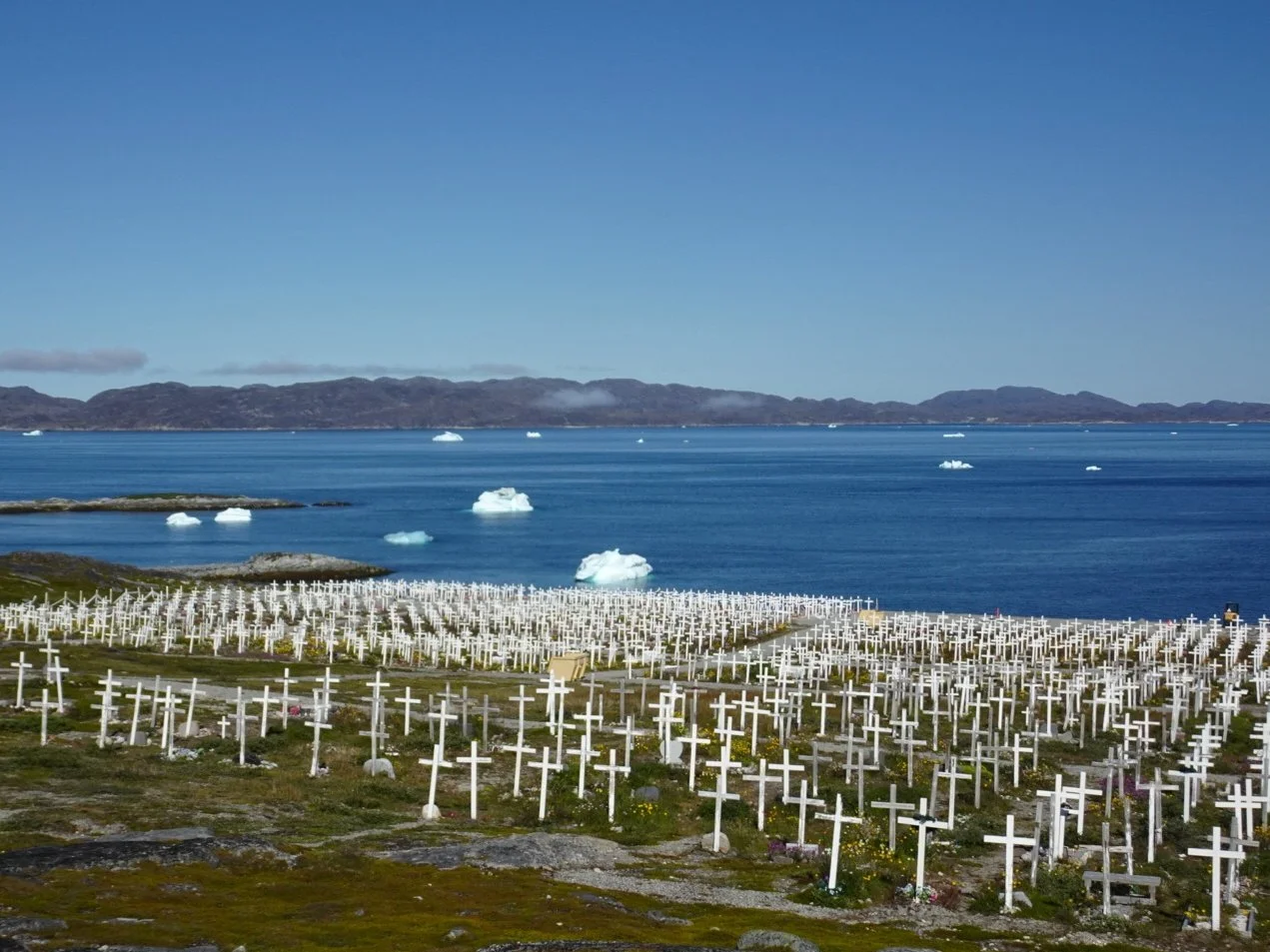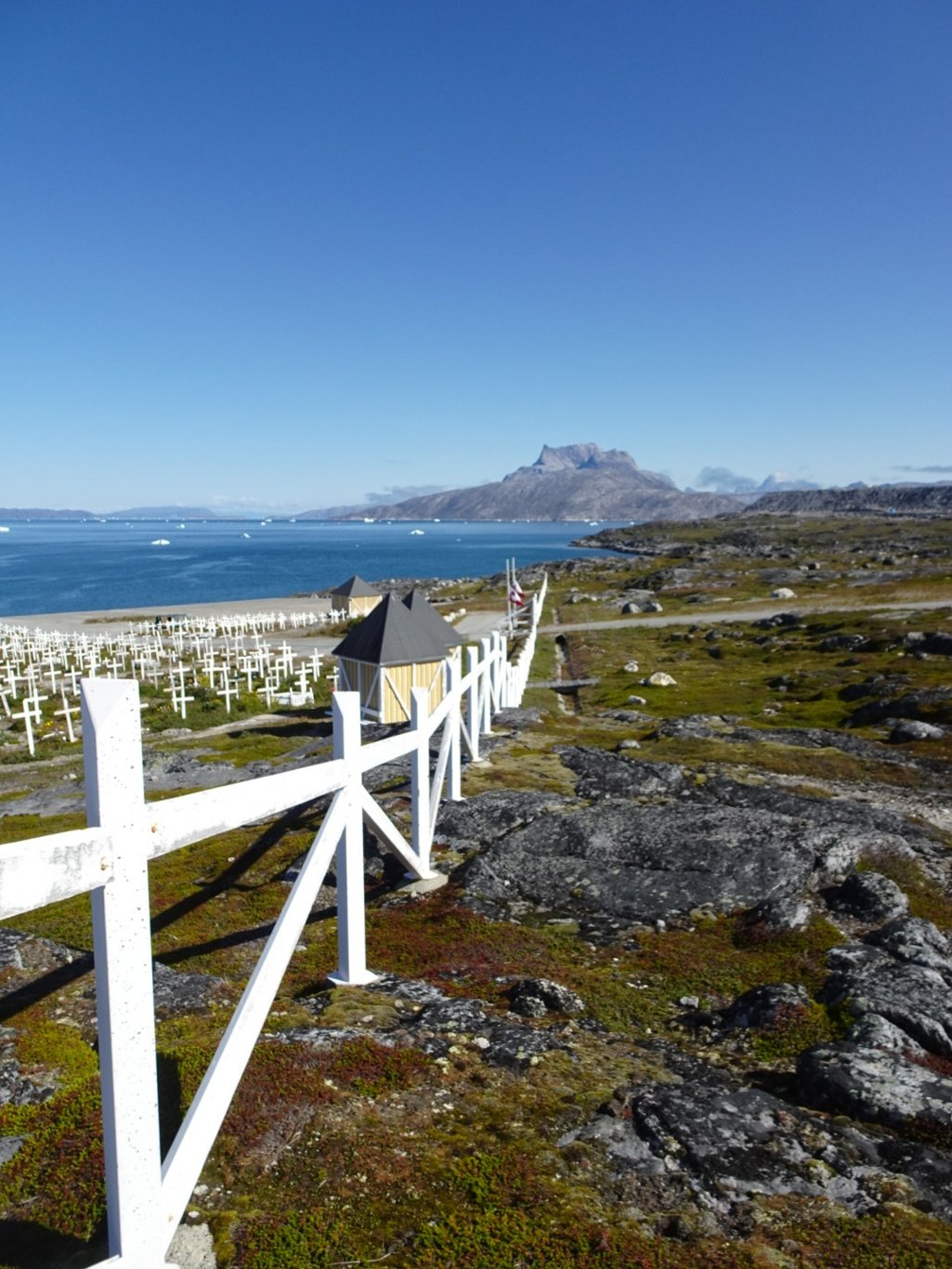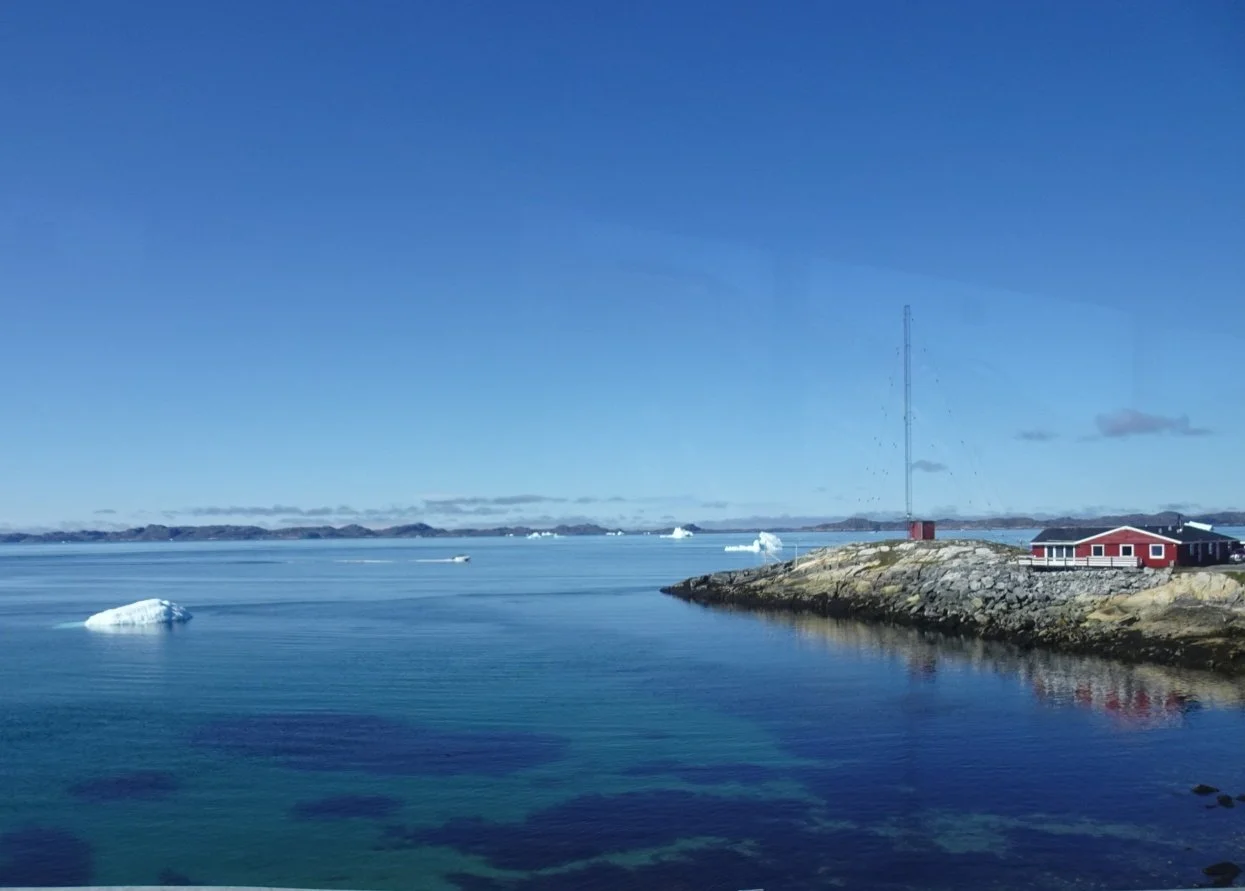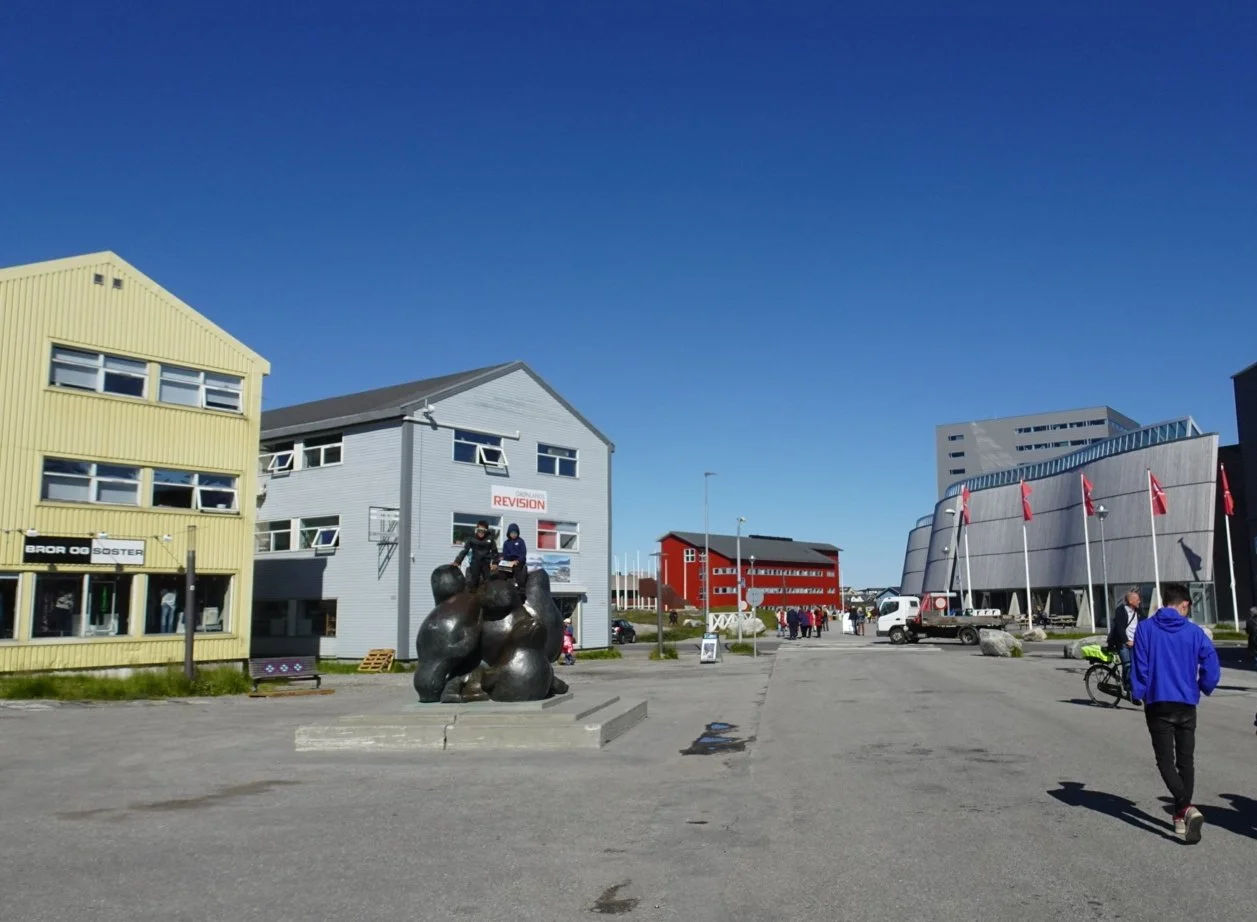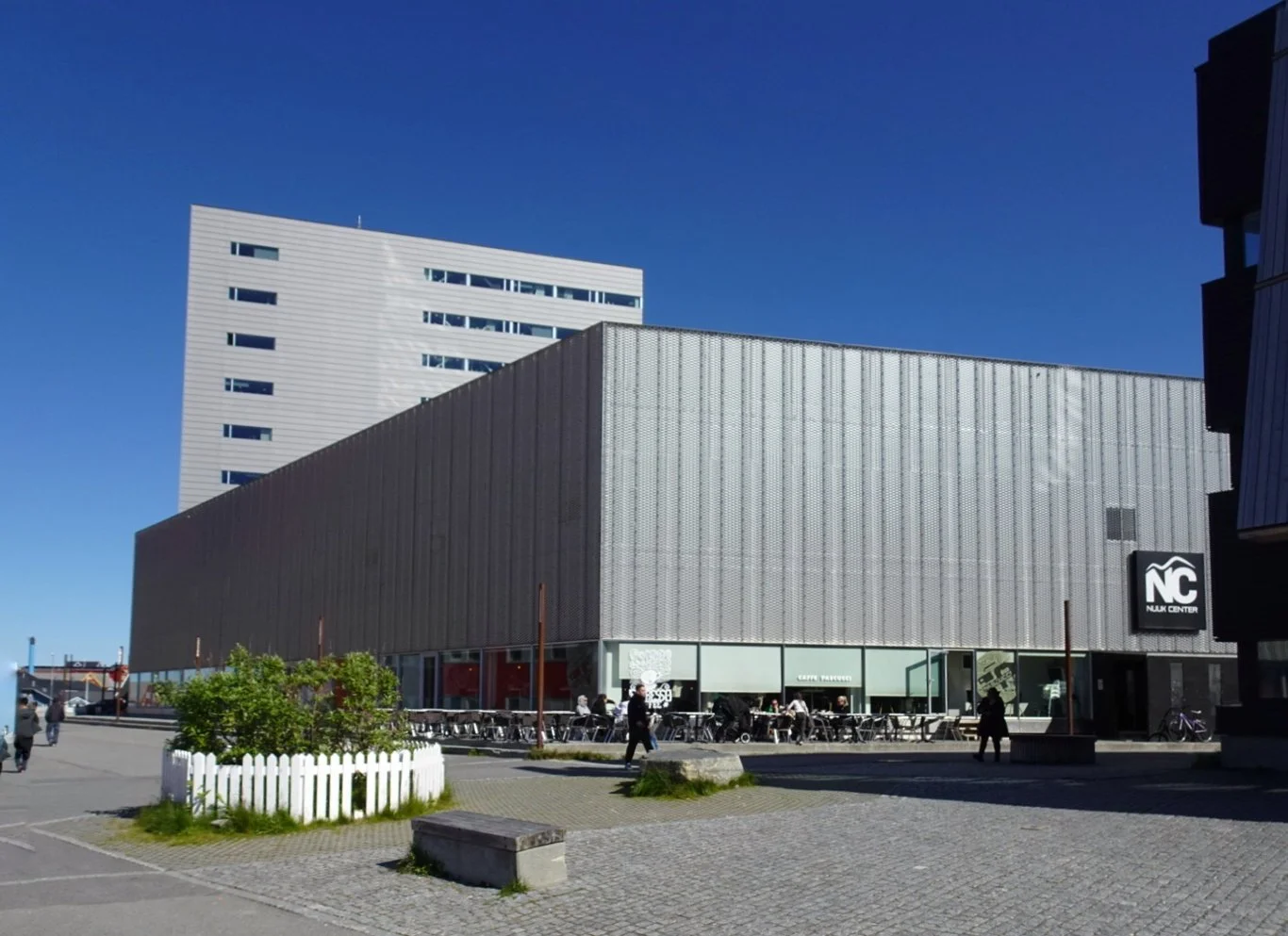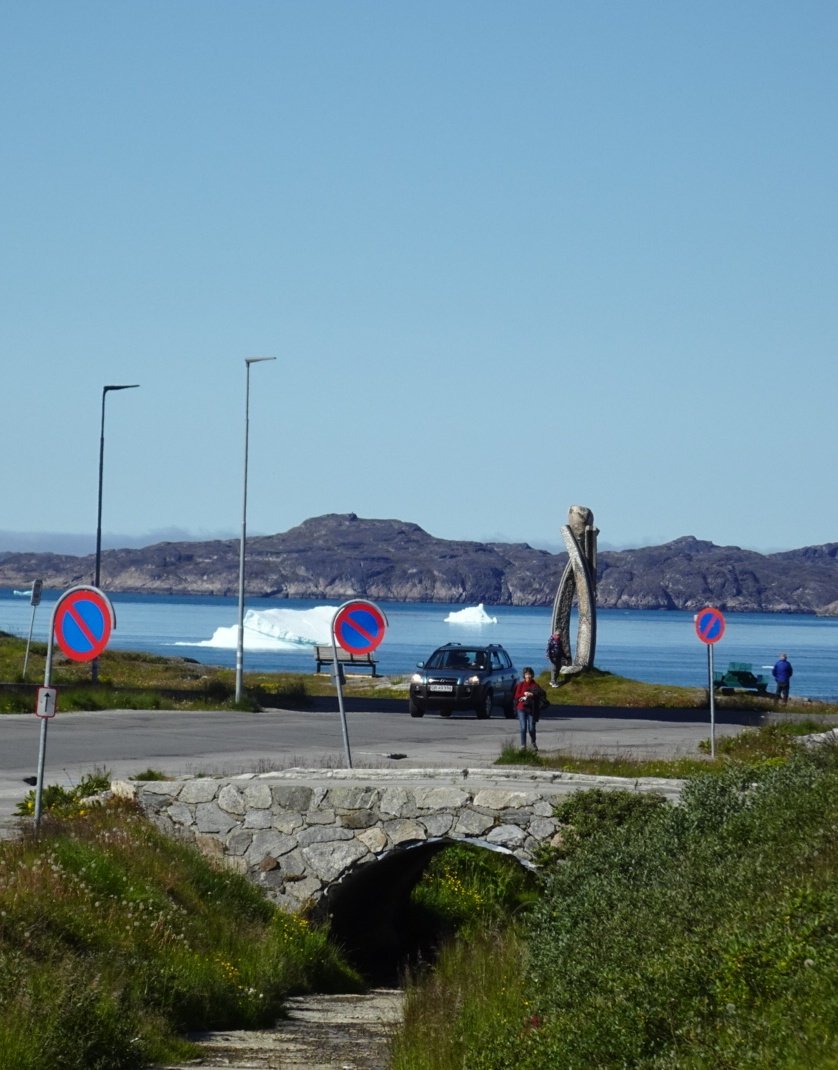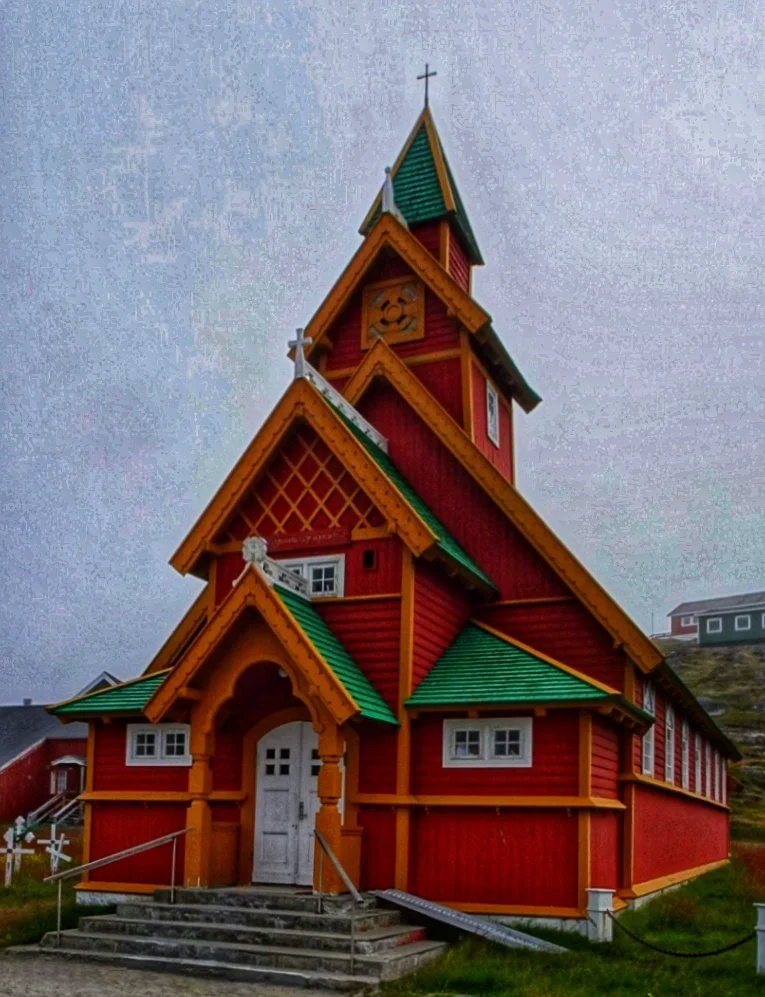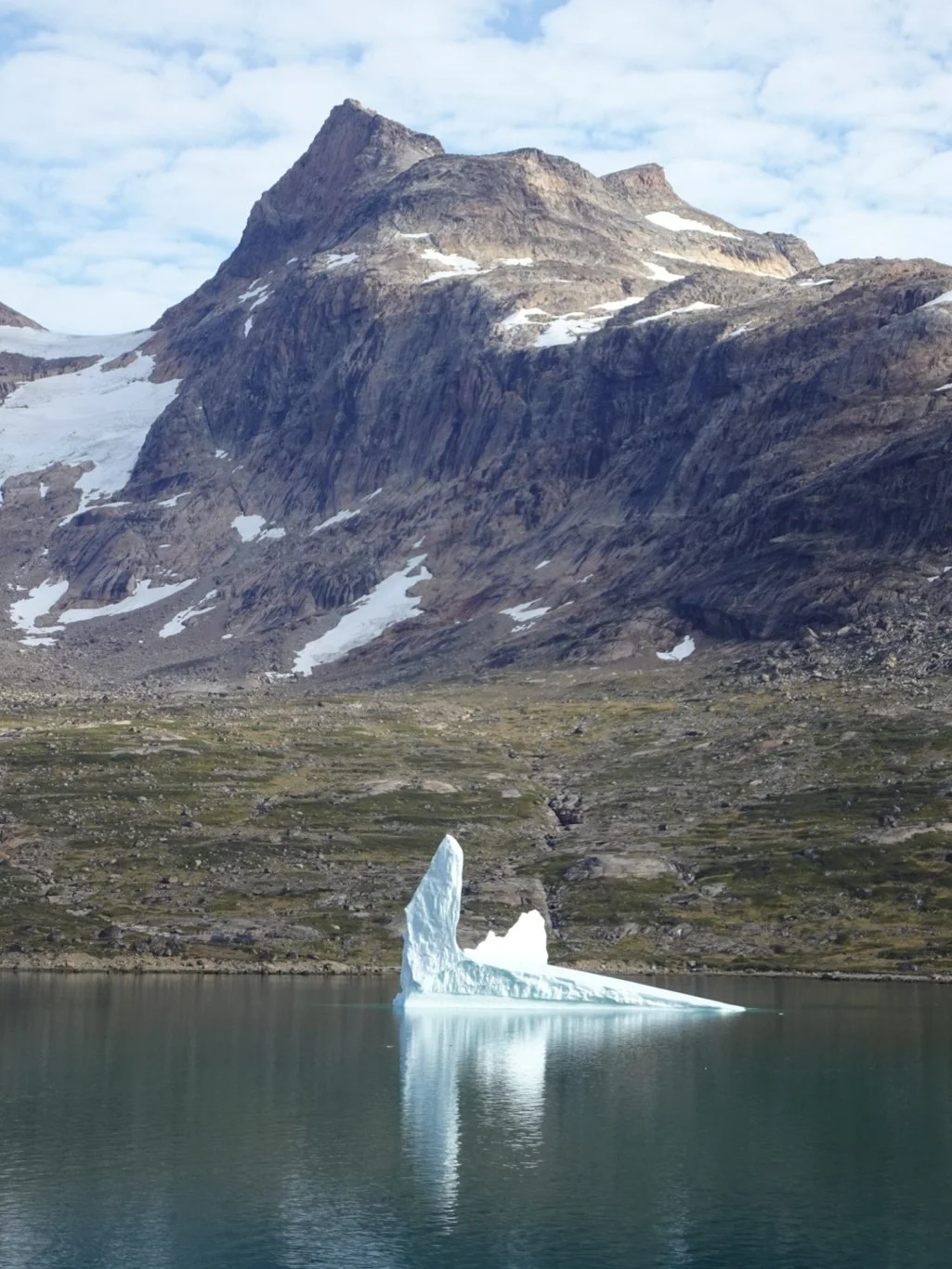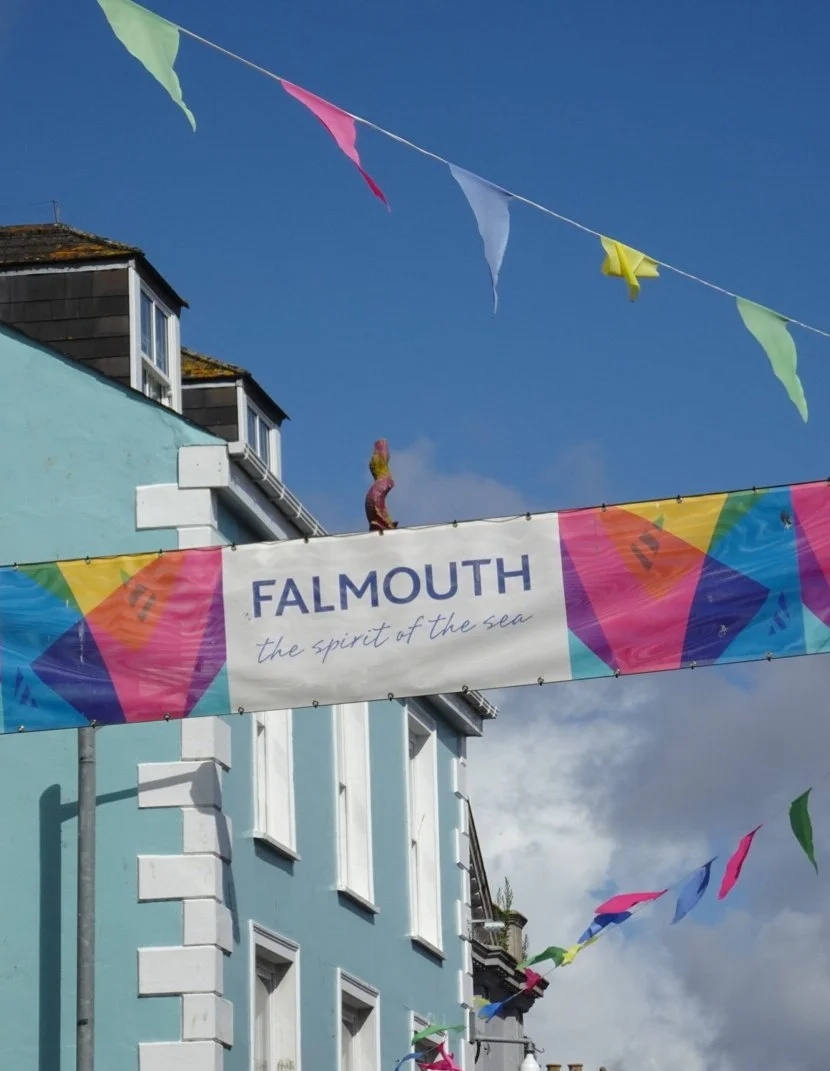Sunshine in Nuuk
The fog horn had been sounding from the minute I woke this morning. It was just 5am and I wasn’t in a hurry to open the curtains and begin the day, especially with the prospect of fog outside.
But by the time we were approaching Nuuk, the capital city of Greenland around 9am this morning, the skies were clearing and we felt rather more optimistic for the day ahead.
In fact, by the time we’d had breakfast and got our things ready to go out, there was blue sky and sunshine. How lucky were we?
We’d planned a short tour to get an overview of the city this morning, thinking that we could use the additional time to return to anywhere that interested us later. So we joined “Taxis” group and set off through the city, learning a little of life here as we went. We heard how the current 17k inhabitants of Nuuk are likely to become more like 30K in the coming years as the population increases considerably. In answer to my question of where these people would be coming from, Taxis said that it’d likely be the more remote parts of the country; from smaller, more marginal communities here and there. Was that something to be encouraged, I asked, thinking that generally the migration from the countryside to the large cities creates problems. Here, he replied, there was less of an issue, for supporting remote communities was costly and there were savings to be made on medical, educational and transport needs if the population became more centralised.
Hmmmm. Interesting, that one?!I
Homes here were generally in blocks of fairly modern apartments built on rocky outcrops around the city. As we drove, Taxis described the nature of each suburb and shared his first hand experience of living here. A balcony was an essential feature, he said, because even on rainy days, washing can be hung out to dry. The importance of this was to keep moisture levels low inside the home to avoid mould. He referred to mould growth again later and it would seem to be a challenge in this climate.
Our first stop was above the harbour, which he described as the “largest in Danish territory” . With such a limited road network here, given the choice of owning a car or a boat, most would choose the latter, he said. But in the winter, the boats needed to be taken out of the harbour (which freezes) and stored on land. We were able to see where - mostly on wooden cradles in the residential districts but also simply stacked on top of piles of wooden crates or pallets.
Everywhere we went, there seemed to be building going on. An extension to the current waste incinerator, a longer runway for the airport here which would enable larger commercial aircraft into the city and of course, more housing developments. Even the little 9 hole golf course was being gradually extended to the full 18 holes.
Our next stop was on the other side of the bay; the area in which Taxis himself lived with his family. On this bright, sunny morning there were spectacular views and the air was crisp and clear, but when the Winter wind blows in I could imagine this all feeling very bleak indeed. I wonder, too, what difference that extended runway will make here?
Photos taken, questions answered, off we went again.
We drove through more housing development. We learned that the wood for houses is imported from Europe as there are no trees in Greenland suitable for such purposes. But the wood is merely cladding and the principal structure of houses and apartment blocks is concrete. Traditionally the houses would be painted red, blue, yellow or green according to the occpations of the residents - I can’t recall exactly which was which, but say the yellow houses were medical and educational people, the blue ones were where the emergency service personnel lived, the red ones were retail and the green…well, whatever I’ve forgotten! Nowadays, the colours had no such significance and the trend was towards more natural colours.
Streets were named after animals, vegetables or similar and Taxis himself lived on Carrot Street!
Every time we caught a glimpse of the water, we also spotted a bright white iceberg or two!
From our next stop, there were three or four more as well.
Our third and final stop was by the cemetery. People here are buried, for the only cremation facility is in Denmark and as a result, it’s a costly choice. Traditionally, cemeteries are situated with a view of the sea and here was the perfect spot. What a magnificent view! In answer to a query about the difficulty of interment in an area of solid granite, Taxis explained that this area had been built with natural earth brought in from elsewhere. Problem solved.
With a last look from the cemetery back to the city, we returned to the bus to hear we’d got a slight problem. Whilst we’d been out taking our photos, the bus driver’s boss had brought his lunch out to him (!) and had spotted a problem with one of the tyres. We would switch to a different bus somewhere then, before returning to the city and then to the ship.
We switched buses at the site of the old TB hospital, being offered the choice of staying on the bus and returning to the ship or stopping off in town and taking the shuttle bus back in a while.
We chose the latter. It was a lovely day, we had nowhere else we needed to be for quite some time and so we might as well take a look around.
It didn’t take us long. We wandered up and down the main street, popped into the Nuuk Shopping Mall for a look around (and to buy some liquorice) before joining the queue for the shuttle bus back.
The stop was just near to the spot commemorating the Arctic Winter Games from 2016.
We’d learned so much this morning and were very grateful to Taxis for sharing his city with us. I love how there seems to always be an iceberg within view!






